Asus Zenbook UX310UA
While it may not look like it at first glance, we assure you, the Asus Zenbook UX310A is a laptop that deserves you attention – not only for its great looks or hard-hitting performance either. On the contrary, this thin and light ultrabook is so well-rounded in basically every way that it’s nearly topped our list of the best laptops, ranking second.
So, what exactly led us to our consensus that the Asus Zenbook UX310A is a phenomenal device, worthy of your hard-earned money? Maybe it’s the fact that it follows in the footsteps of the MacBook Air, Apple’s most affordable laptop – once thought of as the pinnacle of svelte design that houses powerful components.
Yet, while Apple has overlooked the MacBook Air in recent years, merely giving it component refreshes rather than a significant design overhaul, Asus’ notebooks have seen real improvement – so much that we’ve referred to it as the heir to the MacBook Air’s throne.
It’s the truth, too, as if Asus has stepped up and said, “Well, if Apple won’t do it, we will.” Talk about courage...
It’s the truth, too, as if Asus has stepped up and said, “Well, if Apple won’t do it, we will.” Talk about courage...
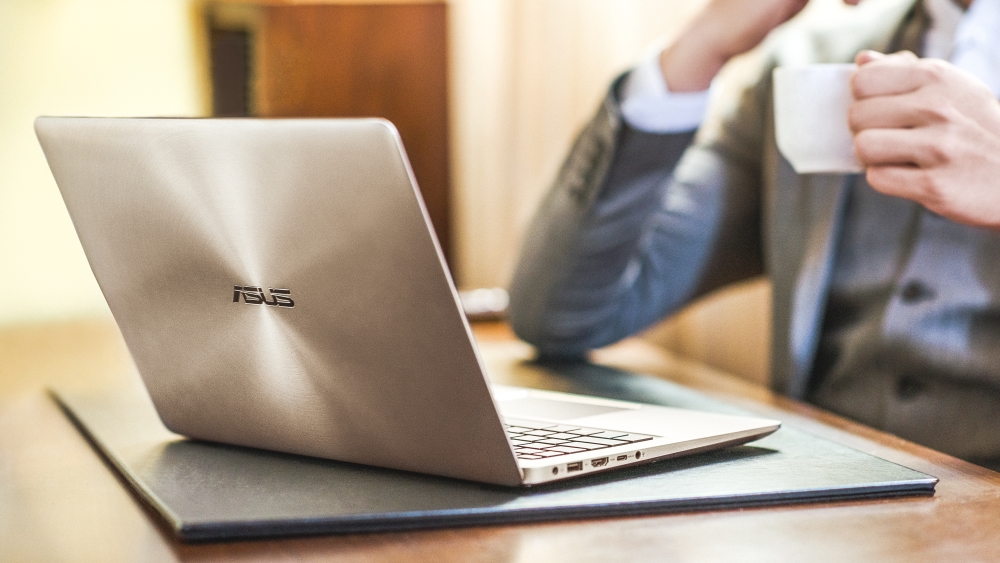
Design
First up, the Asus Zenbook UX310UA is incredibly pretty, arguably better looking than Apple’s spurned masterpiece, in case you couldn’t tell from the CD-like glare on its all-metal finish.
That’s right, those concentric circles emanating from the Asus logo are as impressive in real life as they are in our photos. Better yet, the smooth lines around the edge are even more apparent. The icing on the cake, however, is that you’re saving money by going the ZenBook route. The MacBook Air is more costly and leverages antiquated tech. So far so good.
Sizing it up to the competition, the Asus ZenBook UX310UA is mostly on par. It’s a little thicker than the Macbook Air which is 1.7cm, while the laptop we reviewed here is 1.84cm and admittedly doesn’t have the tapered end.
Lenovo’s Ideapad 710S is similarly specced and thinner but has a poorer display. HP’s Spectre x360 is also slimmer but its starting price is £1,199 ($1,049, AU$2,299).
In order to keep the price low, Asus has increased the thickness, but kept the build quality high. A fair compromise in our eyes.
Before you’ve even turned it on, the packaging is elegant. Unlike a lot of laptops, this one is worthy of an unboxing video.
Upon opening the lid, the simple message “In Search Of Incredible” is emblazoned on the inner lid, which is a nice touch. There’s a distinct lack of plastic and cable ties, too. Of course, the Macbook Air wins out power wise, as it’s one of the few machines that still use the brilliant MagSafe charger, here though it’s a perfectly serviceable L-shaped plug.
Speaking of plugs, the Zenbook isn’t short of sockets. Along the left side you’ll find the aforementioned round charging socket, a USB 3.0, HDMI, USB-C and a headphone jack with an integrated microphone socket.
On the right there are two USB 2.0 ports, an SD card reader and a couple of lights, one for the hard drive and the other that let you know that it’s actually on, or if the battery is charging.
It’s a pity that the two USB inputs on the right aren’t 3.0 like the one on the left, but it’s handy that there’s a USB-C port included.
Incidentally, the USB 3.0 port on the left supports USB Charger +, an Asus invention that charges external equipment quickly even while it’s off or hibernating. There’s bundled software included that’ll help manage the laptop’s battery when using this facility.
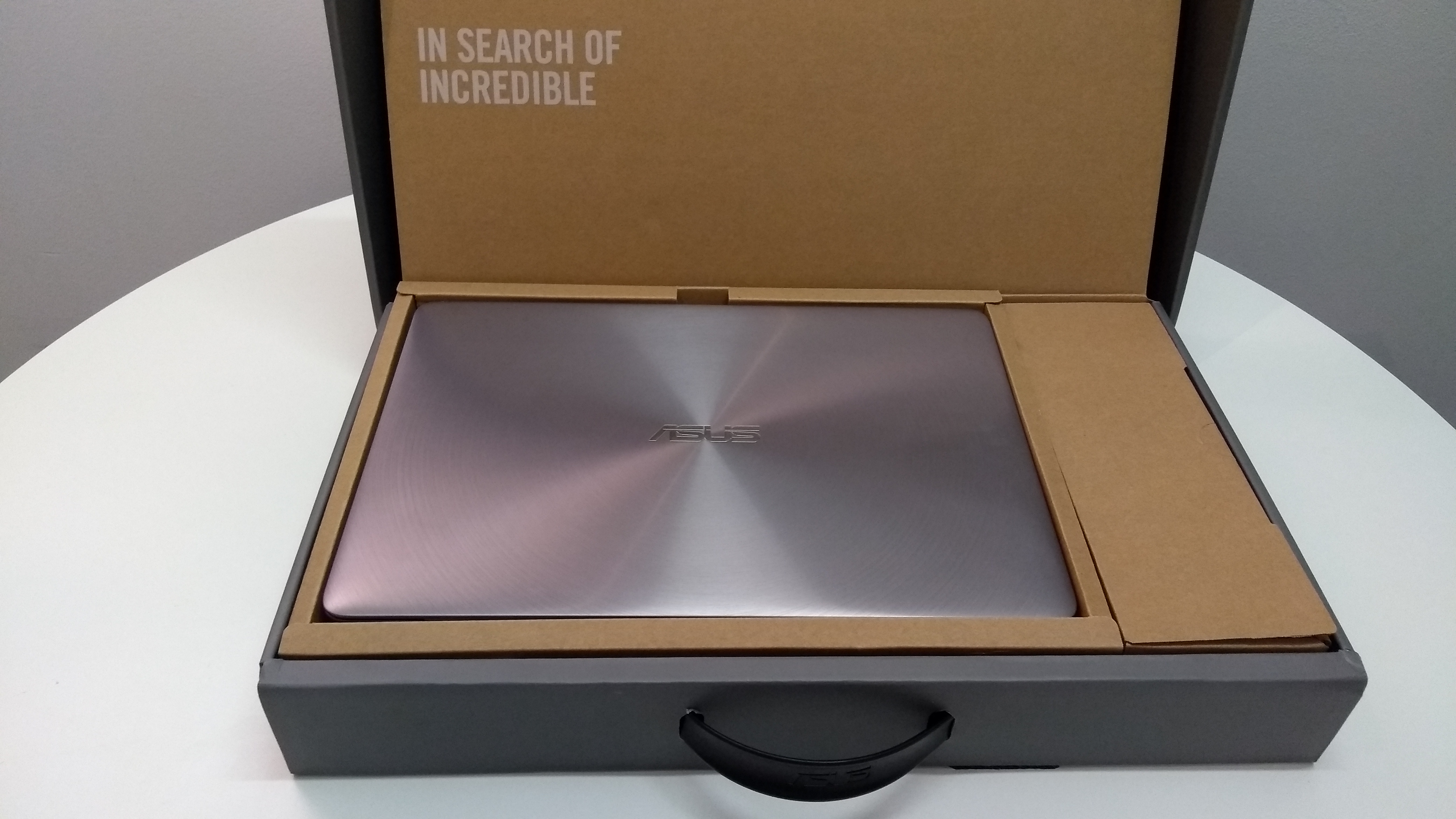
Before you’ve even turned it on, the packaging is elegant. Unlike a lot of laptops, this one is worthy of an unboxing video.
Upon opening the lid, the simple message “In Search Of Incredible” is emblazoned on the inner lid, which is a nice touch. There’s a distinct lack of plastic and cable ties too. Of course the Macbook Air wins out power wise as it’s one of the few machines that still use the brilliant MagSafe charger, here though it’s a perfectly serviceable L-shaped plug.
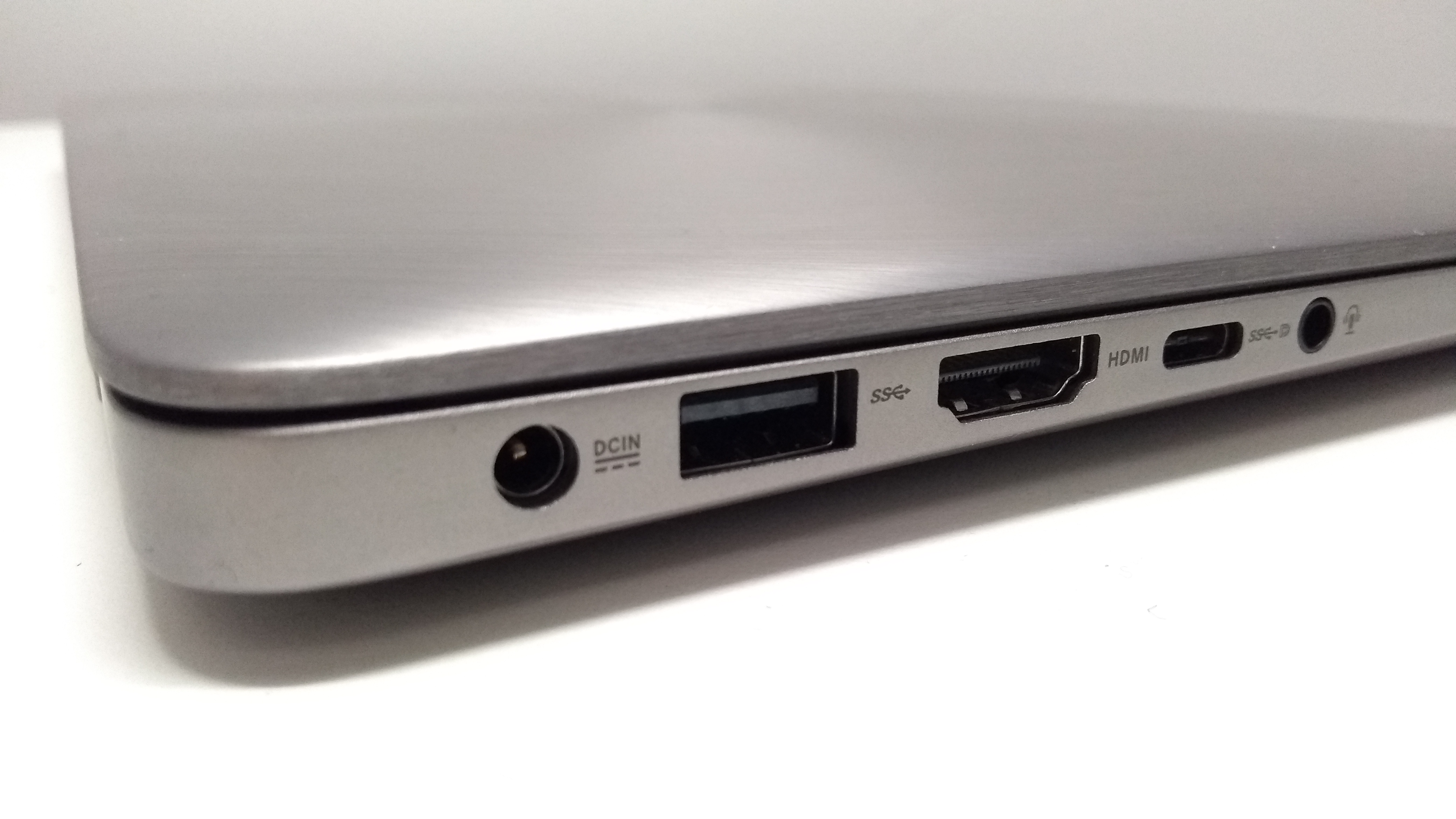
Speaking of plugs, the Zenbook isn’t short of sockets. Along the left side you’ll find the aforementioned round charging socket, a USB 3.0, HDMI, USB C and headphone with integrated microphone socket.
On the right there are two USB 2.0 ports, an SD card reader and a couple of lights, one for the hard drive and the other that let you know that it’s actually on, or if the battery is charging.
It’s a pity that the two USBs on the right aren’t 3.0 like the one on the left, but it’s handy that there’s a USB C port included.
Incidentally the USB 3.0 port on the left supports USB Charger +, an Asus invention that charges external equipment quickly even while it’s off or hibernating. There’s bundled software included that’ll help manage the laptop’s battery when using this facility.
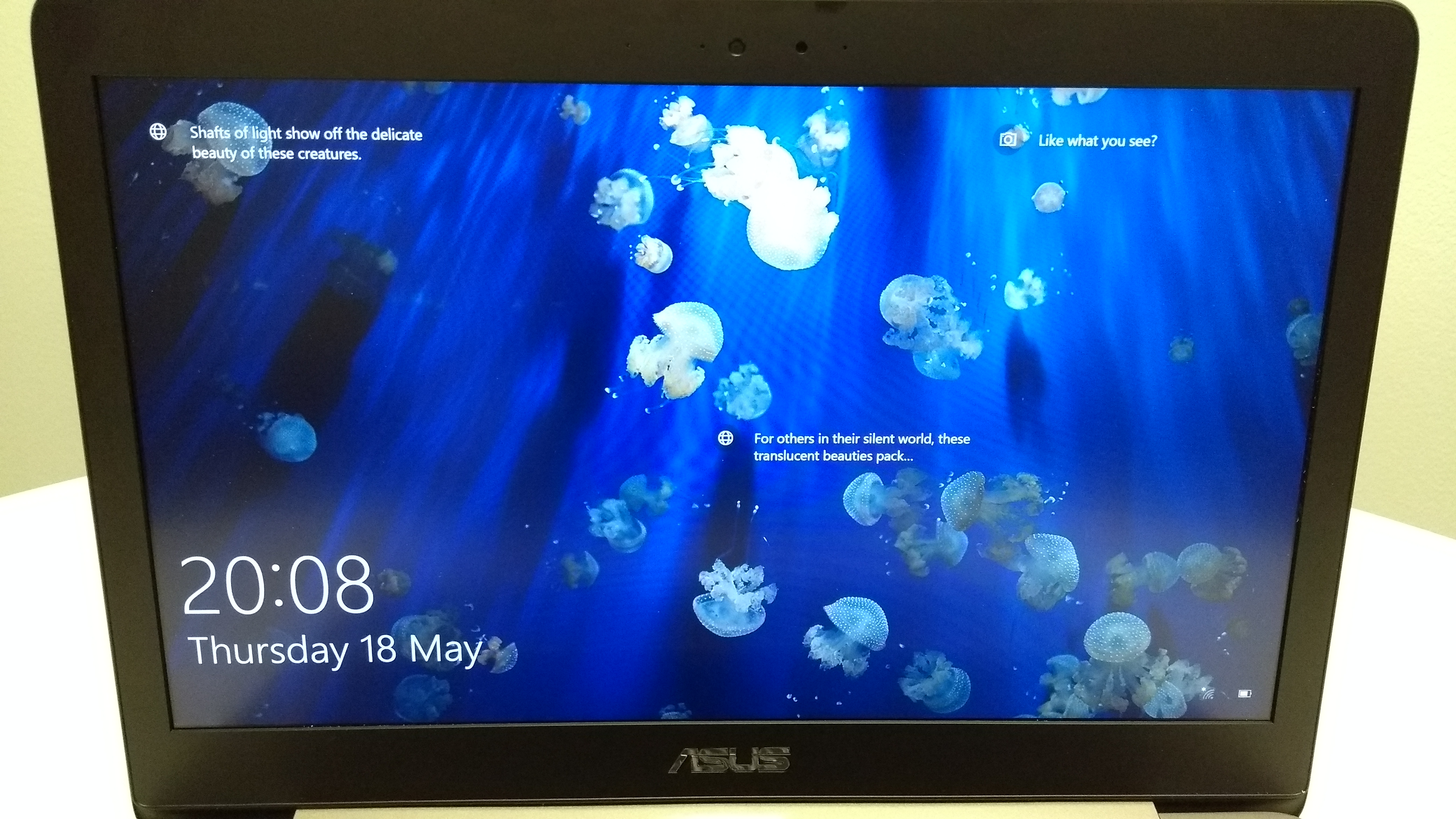
Screen and interface
As well as being a looker, the Asus Zenbook UX310UA also sports a fantastic screen. We were given the QHD 3,200 x 1,800 version to review, but it’s also available with a full HD 1920x1080 resolution screen as well.
And my word is it a glory to behold. Viewable from a wide range of angles (178 to be precise) and the Anti-Glare actually does what it’s meant to do.
There is very little edge burn when the screen’s entirely black and the colors are well-defined, deep and avoid looking garish. This screen could work for photographers on the move because of its wonderful color definition.
And, if we go back to the Macbook Air comparison, at the same price point you most definitely wouldn't be getting a Retina screen. If we have one criticism, the bezel is a little large, but it’s not too obtrusive.
At first we thought the keyboard wasn’t up to scratch, as typing causes a slightly disorientating bend in the center. However, the bend isn’t a detriment to the usability, as once we got used to it, it’s a perfectly functioning mechanism with low noise and reliable keys. But you may need give it time to adjust if you're used to rock-solid keyboards.

Similarly with the trackpad, it took a bit of setup and getting used to. The pinch zoom doesn’t really work, as it would often get set off while using two finger scrolling.
In the end we had to turn off the zoom and just use keyboard shortcuts. Not an ideal solution, but we prefer to be able to use two finger scroll and can do without pinch zoom. The pad itself feels a little slippery compared with others. But again, this is not a deal breaker and these niggles are fixable.
First reviewed November 2017
Performance
Unfortunately, when it comes to specs, the Asus ZenBook UX310UA simply isn’t in the same class as the superior Dell XPS 13. At the same time, it’s a lot cheaper than Dell’s flagship, too.
Whereas our Asus UX310UA review unit costs about £800 (roughly $1,040, AU$1,400), the XPS 13 starts at $799 (£999, AU$1,899) and goes up from there. As such, there’s no questioning why Dell makes the faster laptop.
So what to compare it to? As mentioned earlier, Lenovo’s Ideapad 710S is in a similar ball park but it suffers from an odd keyboard layout and is chock-full of bloatware. Asus is charting new waters, as many options at this price point go down the touch screen or all-in-one route. The UX310UA is none of these: it’s a simple laptop done very well.
The i5-7200U CPU holds its own in the Cinebench CPU test, scoring an admirable 310, and in both Geekbench tests it scores 3,545 in single and 6,667 in multi, while the Dell XPS 13 scores 3,612 and 7,802. So for general office work, there isn’t that much difference.
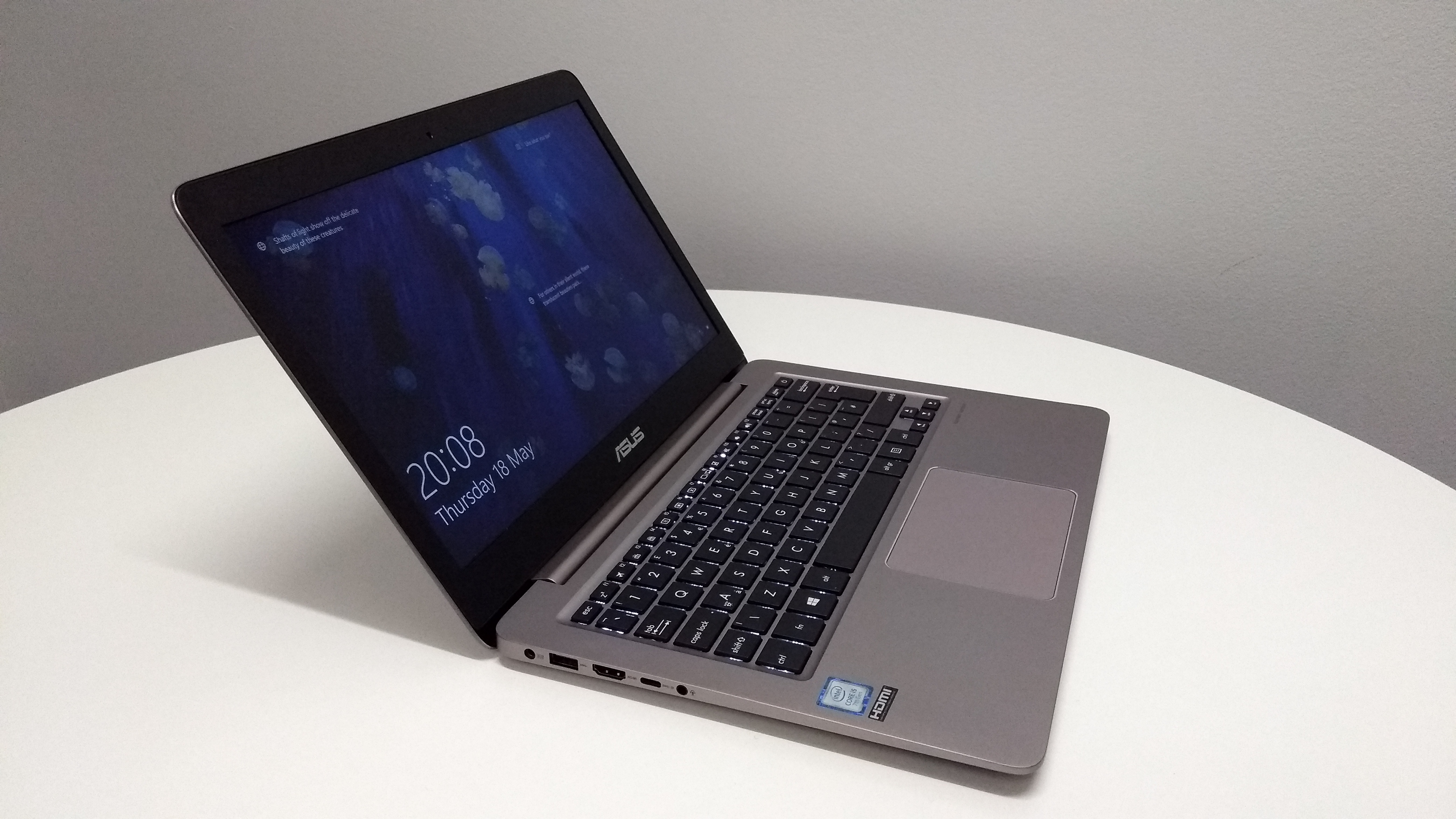
The 3D Mark tests are predictably low seeing as there’s no discrete graphics card in there, just an onboard Intel HD Graphics 620. It scraped 4,000 on the Cloud Gate test, meaning it’ll play the odd game from a few years ago. If you’re looking to play games then you should go for the Zenbook UX310UQ as that has an NVIDIA GeForce 940MX tucked inside.
Its battery performed pretty well at 4 hrs 13 mins on PC Mark’s harsh battery test. It fared less well with our film loop test, only reaching 5 hours 24 mins, while the Dell and the HP Spectre 360 claim 7 or 8 hours.
In everyday use we found the battery life fine but not outstanding. It would last a working day at a push, and longer with more casual use.
However, we noticed that there is perhaps something up with the fan management. Unlike with a MacBook Air, the fan is constantly on. It’s not loud but it is noticeable in a silent room. Mechanical operations are usually the highest drain on a battery (one of the many reasons to ditch CD drives in portable machines) and it’s curious why Asus have in turn ditched their Fan Xpert software which could have helped in this situation. There is third-party fan management software out there, but none that are specifically tailored to this laptop, as of the time of this review. If you do decide to go down that route, obviously proceed with caution.
The brains behind this laptop is a Kaby Lake Intel Core i5-7200U, and while not top of the range, it’s incredibly able at word processing and video streaming. Originally a 2.5GHz processor, Asus has it running here at 2.7GHz for an extra boost. It’s coupled with an ample 8 GB of DDR4, 2,133MHz RAM upgraded to a humongous 20GB. Specs wise, you’re getting a pretty good deal.
If speed is what you’re after, we timed it at 4 seconds from opening the lid from sleep to seeing the Windows desktop. A time that means it’s pretty much equal to the MacBook Air’s speedy wake-up time. It packs a somewhat small 256GB SSD with no secondary drive in the sample we reviewed, which was probably to keep the weight down. There are options available on Asus’s site with an extra hard drive if you need one, however.
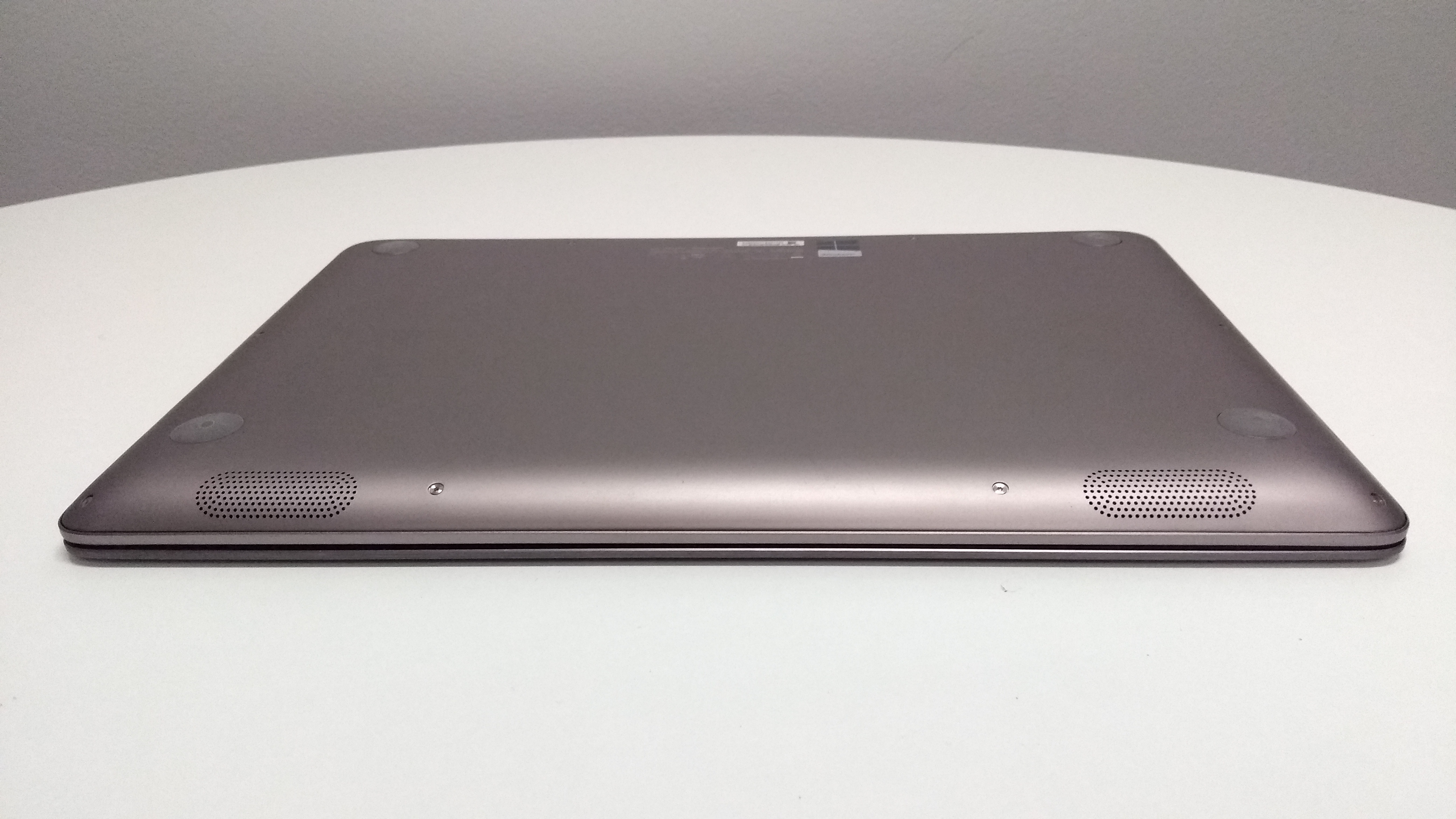
And we should mention the speakers: we actually prefer the Harman Kardon speakers to the Bang & Olufsens found in many Acer laptops.
The sound is more full, less tinny and more defined. The stereo pair are found on the underside of the front which, if placed on a firm surface, will push the sound into it, adding to the warmth of the audio.
Software
It’s not often you mourn the lack of pre-loaded software, but in Asus’s case we actually do.
As mentioned earlier, Fan Xpert would have been handy to keep the fan noise down and battery efficiency up. And its Smart Touch software would have helped tame the skittish touchpad.
We liked
This is a serious MacBook Air alternative. It looks great, the screen is excellent and the all-aluminium body will take quite a bit of office battering.
It’s also at a price point that will turn many heads, £550 ($699, around AU$960) starting point, and our machine is a reasonable £800 (around $1,040, AU$1,400). In everyday usage you’ll be tearing through the web, watching endless streaming videos and doing heavy office work with ease. 8GB of RAM is more than enough when paired with the i5-7200U CPU.
We reviewed many mid-to upper range laptops at this price, and the Asus Zenbook UX310UA comes with one of the best QHD screens we’ve seen in a while. Admittedly it’s not quite as sleek as some of its competitors, but the basic design is incredibly elegant and aluminium throughout. And it comes with a free case. What’s not to like?
We disliked
The less-than-impressive battery life is basically the Asus Zenbook UX310UA's Achilles heel. If only Asus could sort out the constantly whirring fans or whatever else is doing the power draining. Maybe putting a more powerful battery cell could help.
Whatever the issue, this could be a deal breaker for some. There’s also the issue of the bendy keyboard and jumpy trackpad, but these are more niggles than serious flaws. Also, if you’re looking for a touchscreen, this is obviously not for you.
The hard drive could be a little bigger, as 256GB is going to get full pretty fast. So it might be good to pair it with cloud storage account or external drive.
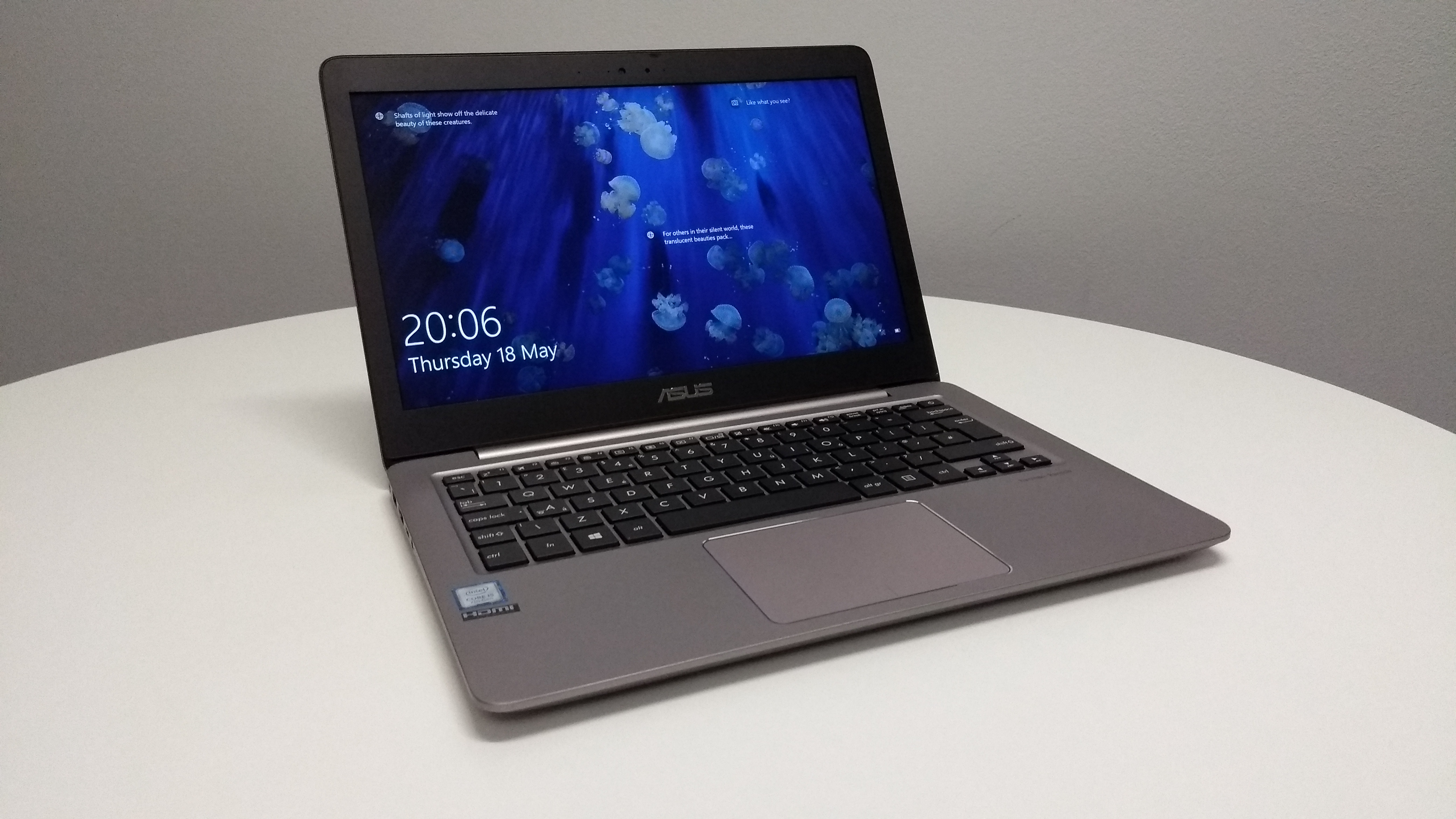
Final Verdict
The Asus Zenbook UX310UA is an able and well-performing laptop that certainly looks the part with a quality all-aluminium build and elegant design decisions.
It’s considerably cheaper than Dell’s XPS 13, putting it in reach of a students and budget conscious office workers. It also puts it in the Macbook Air price point which is another boon, especially because it comes with a better display. And while it’s not the lightest laptop in its class, we appreciated its sturdiness.
Apple have most definitely dropped the ball, and while the Asus Zenbook UX310UA isn’t quite in Apple's league, it’s an attractive alternative if you’re not too fussed about lacklustre battery life.
0 comments:
Post a Comment